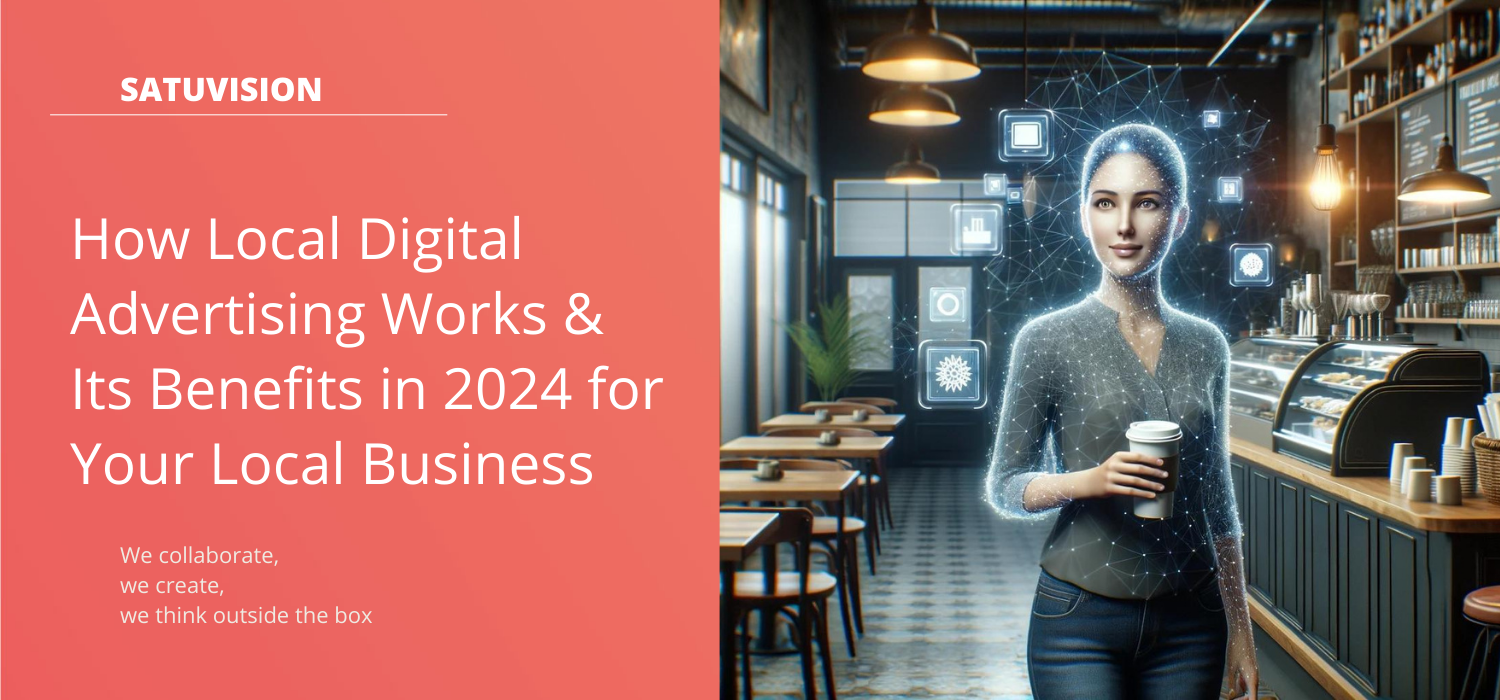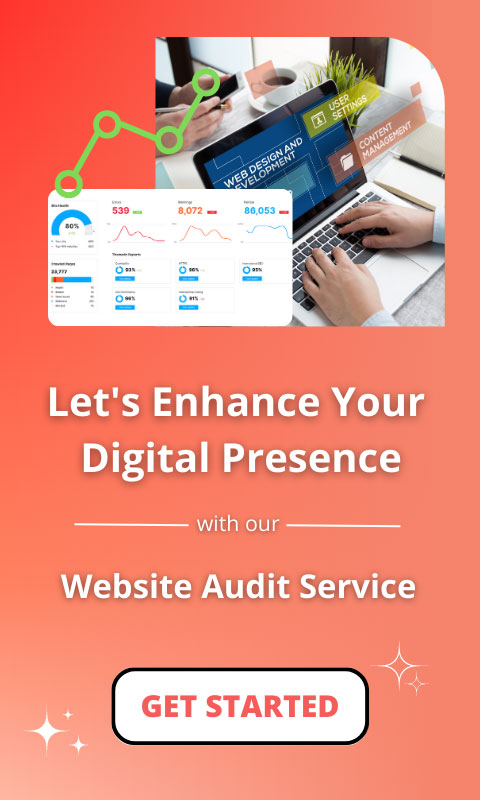Navigating the World of Local Digital Advertising: What You Need to Know
Local digital advertising has emerged as a fundamental way to successfully run a business. Particularly in the hospitality industry.
This powerful tool transcends the limitations of traditional advertising, offering better benefits that cater to the dynamic needs of today’s market.
In this blog, we delve into the essence of local digital advertising, its advantages over traditional methods, and its significant correlation with the hospitality industry.
Table of Contents
Introduction of Local Digital Advertising
Local digital advertising refers to online marketing efforts targeting local audiences, focusing on marketing efforts targeting a specific geographic area. This strategy allows businesses to connect directly with consumers in their local community.
Unlike traditional advertising, which often uses a broad-brush approach, local digital advertising allows businesses to create their message for a specific geographic audience. This precision not only increases the ad’s relevance but also increases the likelihood of conversion, strengthening omnichannel capabilities in digital marketing.
Small businesses require assistance in improving their visibility in local online searches, and digital marketing can facilitate this. Approximately 46% of Google searches are related to local queries, often seeking directions or contact details. Moreover, 82% of people look for businesses using terms like “near me” in their search queries.
That’s why it’s important to know and understand about local digital advertising for your business.
READ MORE: Comprehensive Guide of Definition & Benefits of Local SEO
The Benefits of Local Digital Advertising
Cost-Effectiveness
Local digital advertising is generally more budget-friendly compared to traditional advertising mediums like TV or print. With digital platforms, businesses can achieve more with less, maximizing their return on investment.
A business can use several cost-effective digital advertising strategies to reach its target audience. One of the effective ways to target specific audiences utilizing digital marketing platforms is using Google Ads.
Moreover, social media platforms like Facebook, Twitter, Instagram, LinkedIn, and TikTok serve as valuable digital marketing tools for reaching particular audiences with precision.
By analyzing and testing results, businesses can optimize their digital marketing strategies and continually improve their return on investment.
Other cost-effective strategies include content, email, affiliate, and influencer marketing. Local SEO and search advertising are also effective ways to reach potential customers in the local area.
Overall, local businesses can combine these strategies to create a digital marketing plan that reaches their target audience and generates leads.
Targeted Reach
The ability to target specific demographics, interests, and behaviors ensures that your advertising message reaches the most relevant audience, enhancing the effectiveness of your campaigns.
Here are 4 major targetings you can do:
- GEO Location-Based Targeting: This approach enables businesses to target individuals near their location.
Example: Imagine a coffee shop that sends you a cool discount on their coffee when you’re near them! This can happen if you’re a mobile user within a specific radius of the coffee shop. - Demographic Targeting: Customizing advertisements based on user demographics and interests is key.
Example: Let’s say a business is promoting fancy stuff for families. To get the right audience, they should target wealthy, married people who have kids and love good quality products. - Interest-Based Targeting: This means grouping people based on what they like, such as food, fun stuff, or travel.
- Behavioral Targeting: This includes studying customer behavior and adjusting campaigns based on that behavior.
Let’s say you’ve bought something from a business, they can then show you ads for stuff that’s similar to what you bought.
Measurable Results
One of the greatest advantages of digital advertising is its measurability. Businesses can track the performance of their ads in real-time, allowing for quick adjustments and optimization.
To see how well your digital ads are doing, you need to look at some important numbers. Here are a few metrics for local digital ads:
- Website Traffic: Check how many people visit your website. It shows how well your digital ads are getting people interested.
- Conversion Rate: See the percentage of visitors who do something you want, like making a purchase. This tells you how effective your ads are in getting customers to take valuable actions.
- Cost Per Acquisition (CPA): Look at the cost of getting a new customer. It helps you understand how efficient your ads are at bringing in new business.
- Return on Investment (ROI): Measure how much profit you get from your digital ads compared to what you spend. It tells you if your ads are making your business more money.
- Bounce Rate: Check how many people leave your site after seeing just one page. It gives you an idea of how interesting and engaging your website is.
- Click-Through Rate (CTR): Look at how many people click on a link compared to the total who see it. It shows how well your ads are getting people engaged.
Quick Adaptation
Digital ads can be updated or changed quickly in response to market trends, feedback, or other external factors, ensuring that your marketing remains relevant and effective. Local businesses can benefit a lot by using digital advertising. Here’s why:
- Global Reach: Digital marketing helps small businesses be seen by people worldwide, giving them more visibility.
- Personalized Interactions: With digital marketing, businesses can connect with customers in a more personal and interactive way. This often leads to more people making purchases.
- Adaptability: Digital marketing lets businesses change and adjust quickly. This is important, especially during tough economic times.
- Navigating Online Changes: Flexibility in digital marketing is crucial for businesses to succeed in the always-changing online world.
How Local Digital Advertising Works + 4 Major Tips
One way to nail your local digital advertising is by creating a profile that is up-to-date and accurate. Also, remember to add some cool images and encourage your happy customers to leave positive reviews. This can help a lot in boosting your online presence.
Therefore, no surprise that having a full Google My Business profile makes it almost 40% more likely that people will notice your business as stated by Google. Plus, it doubles your chances of being seen as trustworthy.
To help you understand how local digital advertising works, here are the key stages:
Implement local digital advertising through Google My Business, which can raise awareness for small businesses. Here are several stages to remember when using local digital advertising.
Awareness Stage
A local resident searches online for a service your business offers, like “best coffee shop near me” or “home repair services in [City]”. Your business appears in the Google My Business listing with eye-catching photos, business hours, and glowing reviews, capturing the searcher’s attention and setting the stage for further engagement.
Interest Stage
Encouraged by positive reviews and attractive photos, the searcher clicks through to learn more about your business. They find detailed information about your offerings and directions to your location, increasing their interest and prompting them to visit your website or contact you directly.
Consideration Stage
After browsing your website or speaking with your staff, the potential customer feels confident about your services. They may check your GMB profile again for promotions or updates, building trust and keeping your business top-of-mind as they evaluate their options.
Conversion Stage
Ready to make a decision, the customer uses the “Directions” feature on your GMB listing to visit your location or calls directly to schedule. The ease of this action, supported by positive impressions from your GMB profile, leads to a successful conversion.
Post-Conversion Engagement (Bonus)
After their visit or purchase, you encourage the customer to leave a review on your GMB profile, enhancing your online reputation and attracting future customers. Continuing to engage through GMB with updates and responses fosters loyalty and community.
As you understand the stages of customer engagement to practical implementation, here are four key strategies for effectively leveraging local digital advertising.
- Consistency in Brand Messaging. Maintaining a consistent brand voice and message across all digital platforms helps in building a recognizable and trusted brand.
- Utilizing Social Proof. Showcasing customer reviews and testimonials can significantly boost your credibility and attract more customers.
- Engaging with the Local Community. Participating in local events and online communities can enhance your visibility and reputation within the local market.
- Regular Analysis and Adaptation. Continuously monitoring and adjusting your strategies based on performance data is key to staying competitive and effective.
FREE RESOURCE: Small Restaurant Business Plan PDF for Culinary Success and Growth
Core Strategies for Effective Local Digital Advertising
Utilizing Local SEO

Making sure your business shows up well in local online searches is important. This means using words that relate to your location, making your Google My Business profile look good, and getting positive reviews from local customers. When restaurants use local SEO, it makes things much easier for customers to find and choose them.
A restaurant that implements local SEO can make its outlets more visible and bring in the right customers. Studies show that almost 15% of people who find the restaurant through local searches end up choosing it. Also, 80% of local searches on mobile devices lead to some action. Here is why utilizing local SEO becomes a core strategy for effective local digital advertising.
Meta & GMB Advertising
Incorporating Meta and Google My Business (GMB) into local digital advertising strategies offers businesses targeted outreach and improved local visibility.
Meta provides sophisticated tools for targeting audiences based on detailed criteria such as demographics, interests, and behaviors, ensuring advertisements are highly relevant for local targeting. On the other hand, GMB enhances a business’s visibility in local search results and maps, facilitating a direct connection with potential customers in the vicinity.
These platforms, when used together, leverage insightful data to refine advertising efforts, optimizing both the effectiveness and the return on investment in the digital arena.
Engaging Content Creation
Content should be crafted to appeal specifically to your local audience. This can include local landmarks, cultural references, or community events.
A popular trend in creating interesting local content is collaborating with local influencers. These are individuals known in the community. They can help businesses make content that locals enjoy. This makes the content more authentic, gets people interested, and effectively communicates the brand’s message to the local audience.
Mobile Optimization
With the increasing use of smartphones for internet browsing, ensuring your content is mobile-friendly is non-negotiable. Creating mobile-friendly content for your website brings lots of benefits. It makes it easy for people to use your site on their phones, keeps them engaged, and can improve your visibility in online searches. Ultimately, it has the potential to bring in more customers and increase your revenue.
Frequently Asked Question
Local digital advertising is a way to market your business online, focusing on people in your area. It’s great for small businesses or those offering local services, not needing to reach customers nationwide or globally.
Various digital advertising formats exist, and broadly, we can classify them into eight main categories:
1. Native Advertising.
2. Email Marketing.
3. Social Media Ads.
4. Display Advertising.
5. Remarketing.
6. Search Engine Marketing (SEM).
7. Mobile Ads.
8. Video Ads.





